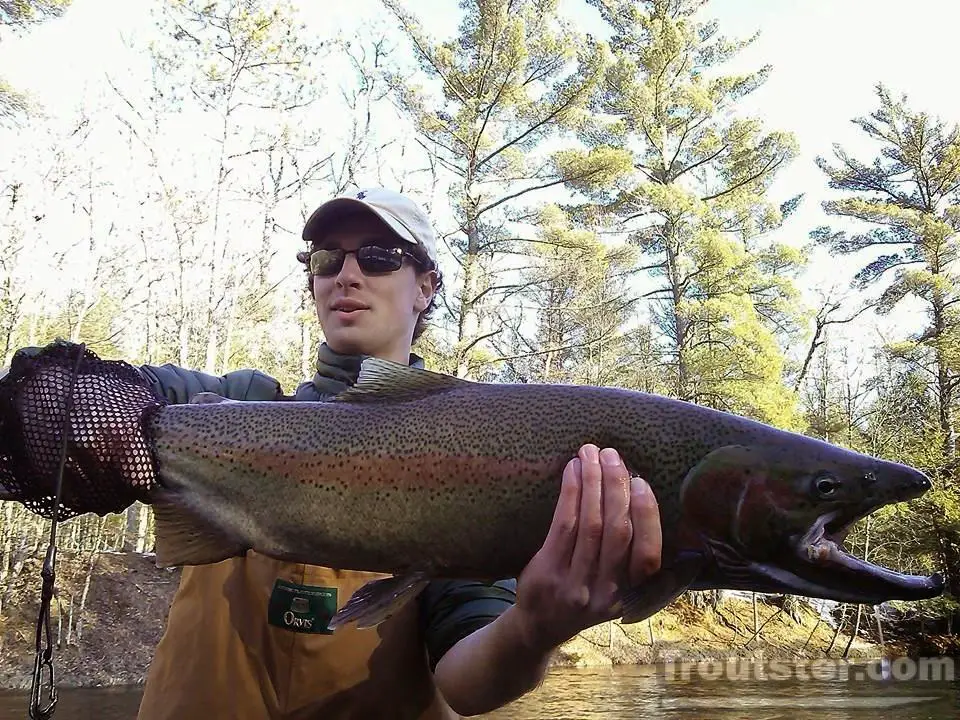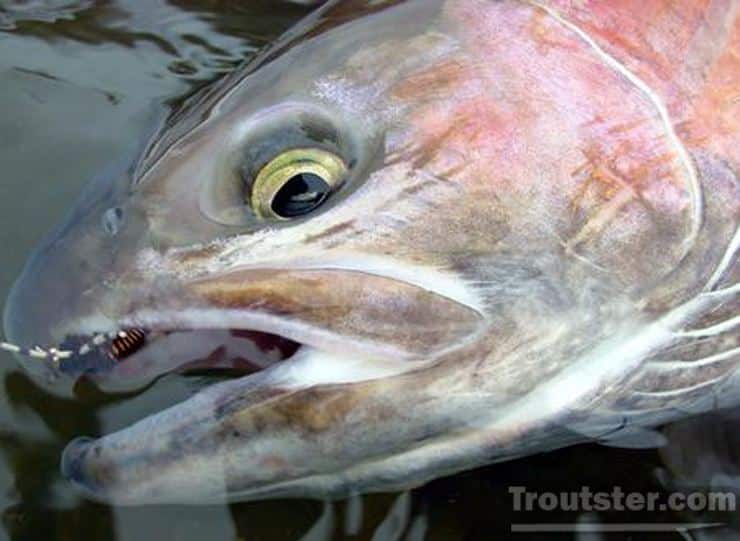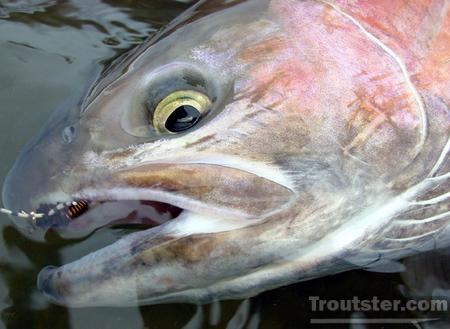This post was last updated on August 17th, 2021 at 08:18 pm
The Skamania steelhead gets its name from the hatchery in Washington that first created it. Skamania trout tend to run in warmer waters than the normal breeds, both the summer and winter runs spawn in later winter to early spring. What sets the Skamania strains apart from their winter-run brothers, aside from running in the summer months, is their long slender bodies and famous tendency towards acrobatics when hooked.
All About the Skamania Trout
How fish bred in Washington state ended up popular in Indiana and Michigan
As part of the Anadromous Fish Conservation Act, they were introduced to Lake Michigan via Indiana in 1975. From then, until 1980s the Skamania hatchery in Washougal, Washington provided eggs to Indiana, which then began its own broodstock program. Before the creation of the program, the Skamania were often raised at Mixsawbah State Fish Hatchery in Indiana.
In addition to the Mixsawbah hatchery, the Richard Clay Bodine state fish hatchery was created on 10.9 acre tract of land in 1983. The St. Joseph River Project was also began, and in it included special fish passage facilities along 63 miles of the river, from Lake Michigan to the Twin Branch Damn. It also plays a vital role in maintaining the population. There is not enough natural reproduction of the trout and salmon in the St. Joseph river, the hatchery helps provide whatever element is missing in the wilds to ensure the breed continues. They rely on the fish using imprinted memories from their environment that are created when they are young to be able to return to their home river when it is time to spawn. Adults are collected when they return and used to breed the next generation.
Skamania Trout summer-run, peak times, and locations
According to a lot of different enthusiasts, the best place to catch Skamania is the St. Joseph river along the 63 mile tract from Lake Michigan to the hatchery. Fishing is permitted in many areas, though as a general warning fishermen are asked to disturb the area as little as possible and to not tamper with the passages. Drastic changes to the environment could potentially affect the fish’s ability to find its way back for spawning.
The summer-run begins midsummer, though they don’t tend to reach Indiana’s 16-mile stretch of the tract until early fall. Depending on what time of year you intend to head out fishing, you may consider starting near Lake Michigan and traveling along the river towards Indiana as the Skamania make their way home.
 Another source to find Skamania steelhead is the Salmon and Little Salmon rivers in New York. They stock the Skamania for fishing starting in May and peaking in June through September. Yearlings are stocked in twenty two tributaries from Lake Ontario, and run into both small and large rivers.
Another source to find Skamania steelhead is the Salmon and Little Salmon rivers in New York. They stock the Skamania for fishing starting in May and peaking in June through September. Yearlings are stocked in twenty two tributaries from Lake Ontario, and run into both small and large rivers.
The Skamania tend to move quickly along the rivers and heavy rains or rises in water levels can spur them to hasten their journey. To try and catch them anglers are encouraged to get familiar with a section of river that they are comfortable with. The numerous locations offer both secluded and populated sections to fish from.
Skamania Fishing Tackle and tips
The Skamania steelhead is well-known as an aggressive and agile fish. Many a tale has been had regarding these silvery bullet-like fish flying out of the water once hooked. It is not uncommon to hear of one landing themselves on the shores or even in low-hanging tree branches. Though don’t let that fool you, they are also know for getting themselves back into the water after such situations.
Skamania tend to prefer fast moving, and shallower waters, typically around four feet deep. They can linger about water seams, where two currents diverge, and in the calmer pockets of water around large boulders and the like. They also don’t tend to enjoy cooler depths, with the most activity seen in waters between 45 to 86 degrees Fahrenheit. Overcast and rainy days also tend to incite them to being more active, so plan around weather accordingly.
Spin, float, and fly fishing techniques can all be used successfully in catching Skamania
For spin fishing, an eight to ten foot rod with a line of at least six to twelve pounds test and a smooth action spool able to hold at least 150 feet of line tends to work well. Float fishers using the traditionally longer rods and heavier test lines tend to have a lot of success in tributaries. Typical fly fishing setups also work well on the quick-moving steelhead breeds.
Skamania, like other steelhead species and unlike salmon, continue to feed when they begin their run down the river. They respond well to anything resembling their natural food sources such as fish eggs, mayfly nymphs, larvae, leeches, and even minnows. Flies offer a wide range of color, shape and size and can be used effectively when angling for the Skamania. Eggs, either heavily scented singulars or small dime-sized clusters are popular baits as well. Worms are advised against because younger fish are more likely to swallow them causing a fish fatality.
Skamania Trout Conclusion
Fishing for these summer run torpedoes can be the most fun you have ever had! Just like all steelhead – you are not likely to catch a ton of them, but when you finally hook one it is well worth the wait. While fighting these fish, you should make sure you don’t overplay them. The warm water and superb fight these fish put up will often kill them if you take too long, so be sure you are using the proper sized rod for these summer run steelhead.



